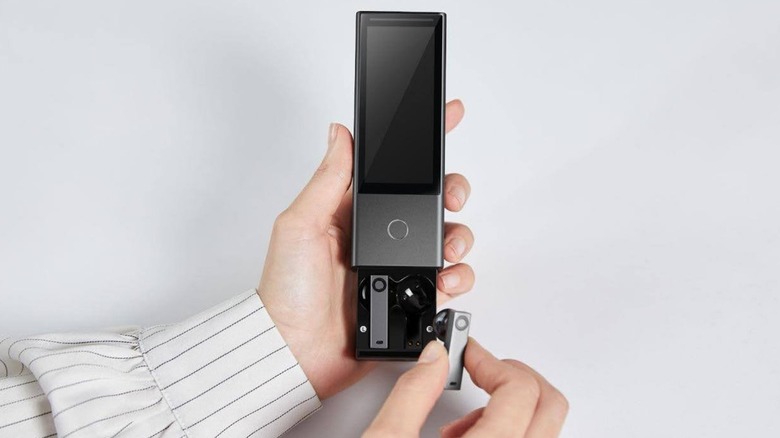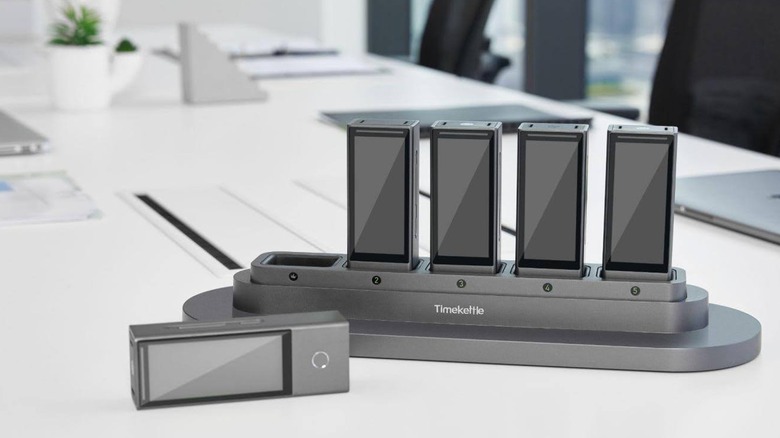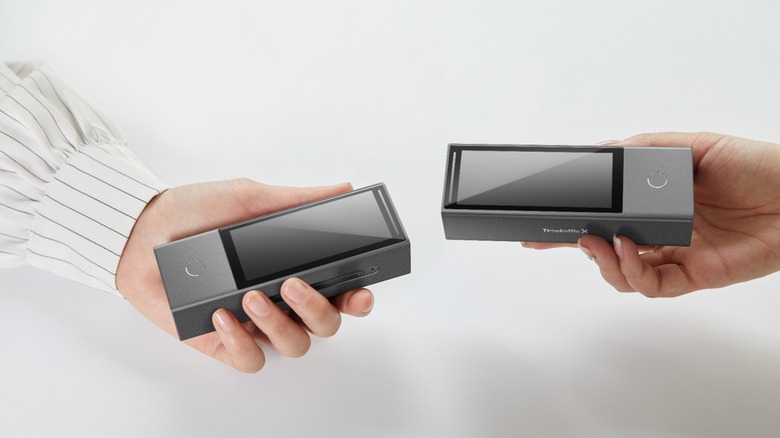Timekettle: Bringing People And Cultures Closer Through Technology
Sponsored Content. The sponsor may receive a commission on purchases made from links.
The evolution of technology in the last hundred years has done wonders to bring all of humanity closer together. Talking to someone on the other side of the planet once took days to weeks, but now you can fire off an email to nearly any other country in a fraction of a second. However, while technology has made it easier to directly converse with individuals of other locales and cultures, there's still a language barrier to contend with. It may be easier to learn other languages now, but not everyone has the time or means to do so. Automated translation hardware and software do exist, but the use of these systems can be slow and unwieldy, derailing the natural flow of a conversation.
It's for all of these reasons and more that tech company Timekettle has plied its trade primarily in digital interpreter hardware and software. The brand seeks to not only inform one person what another person is saying in their own language but do so in a way that preserves the pacing and tone of the conversation. It has certainly made some impressive headway toward this goal, as since the company's founding in 2016, it has become a top-selling brand in the translator device industry with the largest market share on Amazon and hundreds of thousands of users in more than 200 countries and regions.
Timekettle's flagship product in this pursuit is the X1 AI Interpreter Hub, a compact, smartphone-sized device that can easily sync up with other instances of itself to translate multi-sided, multilingual conversations in real-time. It's some truly fascinating technology, which is why we here at SlashGear gave it an Innovation Award at the most recent Consumer Electronics Show.
For more information on Timekettle's intent with this next-gen translation technology and the practical applications of the X1, we spoke directly to the company's founder and CEO, Leal Tian.
The inspiration behind Timekettle tech
According to Tian, the primary inspiration for his translation technology is one of his favorite science-fiction novels, "The Hitchhiker's Guide to the Galaxy" by Douglas Adams. One of the many unusual pieces of alien innovation present in this story is the "Babel Fish," a literal fish that crawls into a user's ear and automatically translates any alien speech they hear into a parsable language.
It's thanks to this little fish that all of the characters in the story can converse normally despite being from different worlds, cultures, and even species. The X1 operates on a similar principle via earpieces that remotely connect to a central device as well as to other devices for networking. A group of individuals wearing X1 earpieces would be able to talk to each other and hear all responses in their own language, even if every user were speaking something entirely different.
"We wanted to invent something that hasn't been invented before, so we began to think if there's a way we can create something to help people communicate like in the sci-fi films," Tian explained. "Two people from different countries can talk like us, keep our eye contact and body language, just like you're talking with your native language."
Tian also noted that there is a basic need for a standalone device that you can pull out and activate at a moment's notice, which in turn can facilitate seamless dialog between languages. Needing to turn on your phone, pull up an app, and read out text translations is too slow for casual chatting.
Practical applications of the X1
Many major corporations around the world have sectors in multiple countries, which requires regular interfacing with local businesses, partners, representatives, and more. The traditional means of handling this would be to hire an interpreter and speak through them, but doing this can make you seem somewhat unapproachable — like everyone is only talking to your interpreter rather than directly to you. It's an uncomfortable, unnatural way to speak to people, which is what Timekettle hopes its developments can remedy.
According to Tian, the X1 is designed to make conversing easier by overcoming language barriers in a quick and convenient way. Whether you're in a giant meeting room with multiple important individuals who need to be in the loop or a private office with just a few people, the X1 can be easily shared around with its multiple operating modes.
"There is the mode we're using now where we share headsets, and another mode for multiple groups where the products team up with each other. You just need to touch them, and it will automatically set up the meeting."
One weakness of some translation systems is that their word libraries may be inaccurate, out-of-date, or otherwise unaccommodating of regional dialects. To head that problem off, Timekettle has endeavored to imbue its technology with as much understanding as possible. The current version of the X1 can parse over 40 different languages, with support for over 90 different accents and dialects.
Does everyone need Timekettle's tech?
Timekettle's X1 is intended more for larger-scale companies. Rather than every single person in a meeting having their own X1, for example, a company could just keep a stack of them ready for international meetings.
"I think it is unlikely that everyone will need it," Tian explained when asked how many units an international organization would need. "For example, if you have twenty people attending a meeting, in this case, you may need at least ten sets."
Each individual unit costs $699 USD, which is a bit too much for casual usage. However, as Tian puts it, this isn't a device for casual translation but a precision tool for those who need to be as sure as possible that they're hearing accurate translations as quickly as possible.
"Because this product integrates a lot of our new technologies, the cost of its own hardware will be relatively high," Tian said.
"It is not suitable for everyone, but it must be suitable for those who have the highest requirements for translation experience." (Timekettle has other products intended primarily for individual users.)
Communication, not just translation
The overall purpose of the X1, and indeed Timekettle's goal at large, is to foster natural discussion between languages. As we said, it's very difficult to parse what someone else is saying if their message is being garbled by half-baked translation. Nuances can get lost in the mix, and you might not appreciate the full scale of what's being said. In Tian's words, "before Timekettle, other companies focused on translation, but none of them focused on communication."
The ultimate purpose of next-generation language interpretation is to create an "immersive communication environment so ideas will grow naturally," according to Tian. The point of a good translation device should be to minimize its own presence as much as possible to keep communication natural and consistent.
"What's the final goal of a translation device? That's the question we have frequently asked ourselves. The hardware or the software is never the purpose, they are just tools," Tian said.
"The real thing people want is immersive experiences that help you or even let you forget that the device even exists. That's the final goal."



